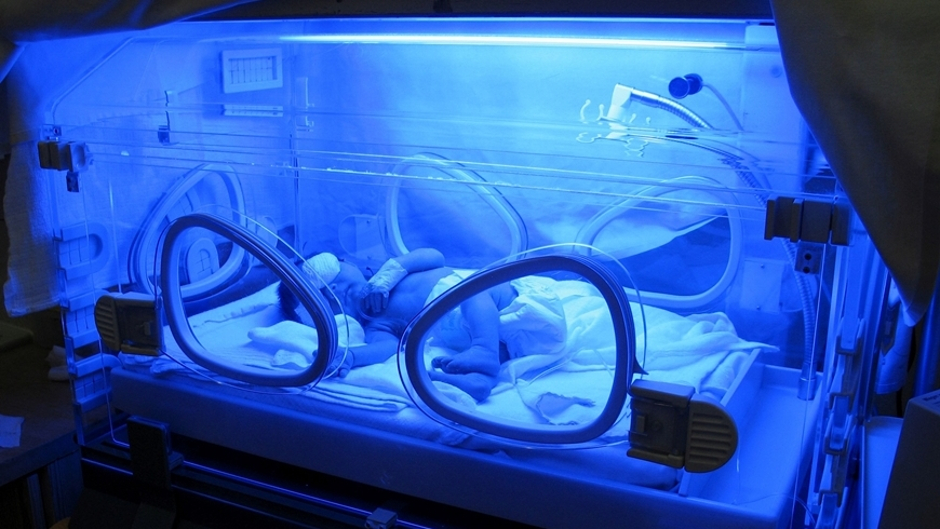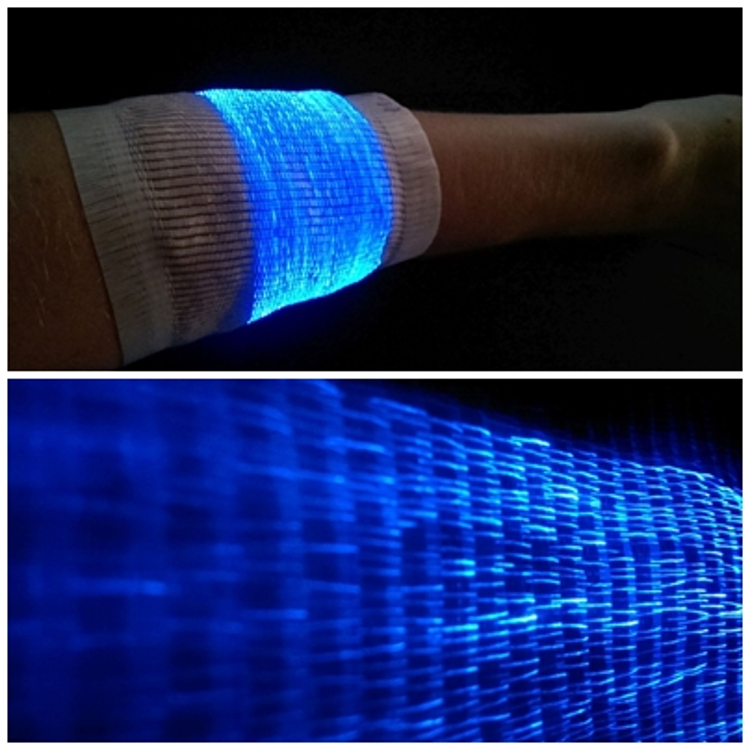
Neonatal jaundice - a condition that affects around 60 per cent of babies born at term and 80 per cent of babies born prematurely - is typically treated using blue-light phototherapy within an incubator and requires the baby to lie undressed, with eye protection, beneath a lamp for extended periods.
Now, a team from Empa, the Swiss Federal Laboratories for Materials Science and Technology, has developed illuminated pyjamas for babies that turn the treatment into a so-called "wellness experience".
Led by Luciano Boesel, the team from Empa’s Biomimetic Membranes and Textiles division created textiles with optically conductive fibres woven into them. Battery-operated LEDs serve as a light source for the light-conducting threads. Together with conventional thread, the optical fibres are woven into a satin material that distributes the light supply evenly throughout the fabric. The research is published in Biomedical Optics Express.
With a diameter of around 160 microns, the dimensions of the optical fibres match that of regular threads. Boesel's team determined the appropriate angle at which the threads must be bent during weaving so that the blue light stays in the therapeutic wavelength range of around 470 nanometres but is emitted onto the baby's skin, rather than staying in the fabric.
The best result was achieved in a weaving process with a so-called 6/6 bond to create satin. Here, the optical threads have particularly few cross points compared with the traditional thread and are bent in a way so the light is emitted uniformly over the skin. When woven this way, the photonic textiles can be made into a romper or a sleeping bag so the patient is clothed, and can be held and fed.

Lead author Maike Quandt claimed the illuminated fabrics are suitable for everyday wear as they are washable and tolerated well by the skin. In a thermoregulation model, the researchers studied how breathable the light textiles are. One of Empa's own skin models proved that the pyjamas also perform favourably in terms of friction on the skin.
According to Empa, infant jaundice is a common phenomenon because babies' metabolisms are not very resilient within the first few days after birth. Normally, the liver disposes of many toxins in the body. With haemoglobin degradation, however, the child's liver may still be overwhelmed. If the toxic degradation product bilirubin accumulates in large amounts, visible yellow deposits occur in the skin. The situation then becomes dangerous if the bilirubin exceeds a certain threshold and the yellow pigment damages the brain. In severe cases of jaundice, the brain damage can only be prevented by a blood transfusion.
Today, light therapy in incubators prevents this development if it is applied in time. Light intensities of 30 microwatts per square centimetre in the blue spectrum transform the toxic bilirubin into a soluble form that can easily be removed by the infant's immature organs.
The prototype pyjamas currently radiate blue light from the photonic textiles at a lower light intensity. "For commercial production, the light intensity of the pyjamas must therefore be increased somewhat," said Quandt.

Collaboration to address viable solutions for VAWG database
<blockquote>address the lack of standardisation, coordination, and collaboration of gender disaggregated data intelligence across various regions,...